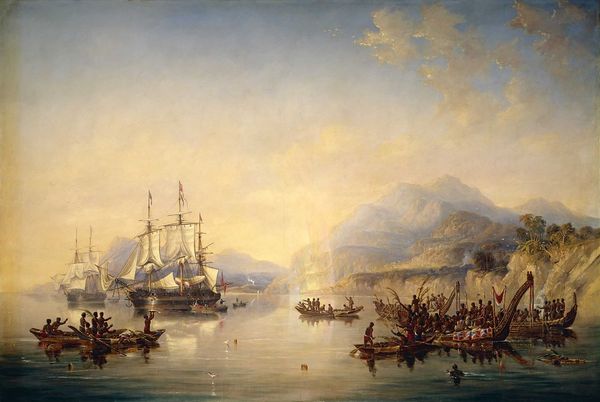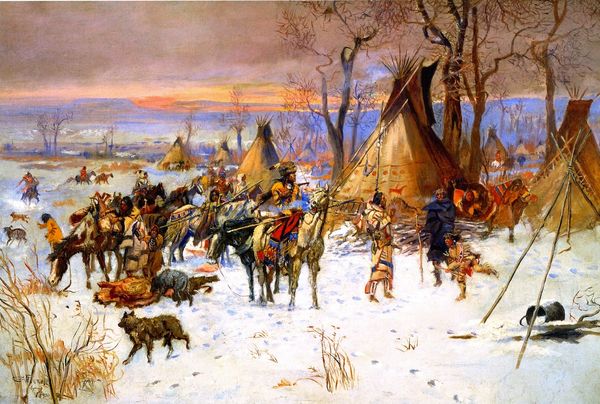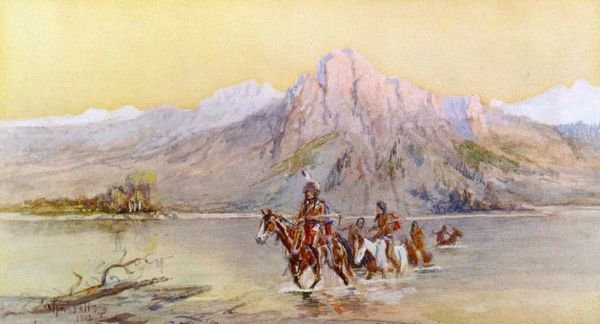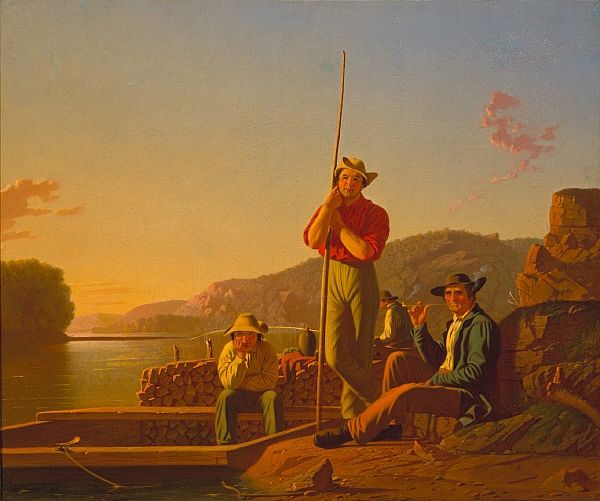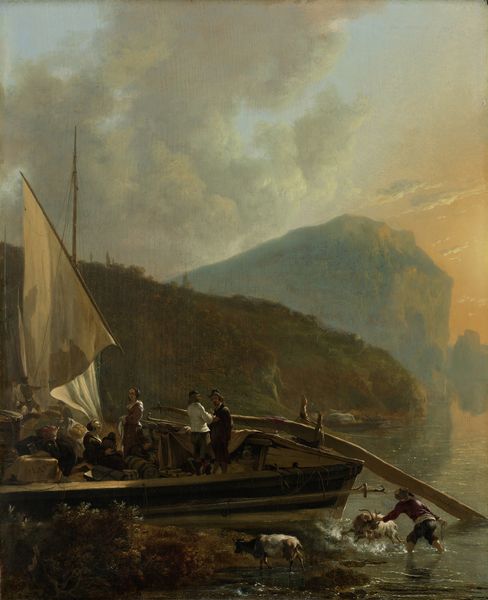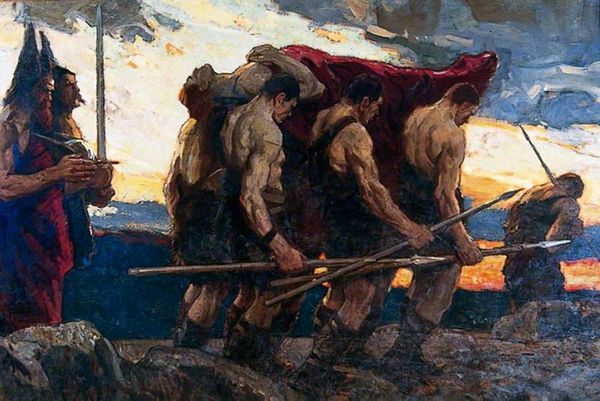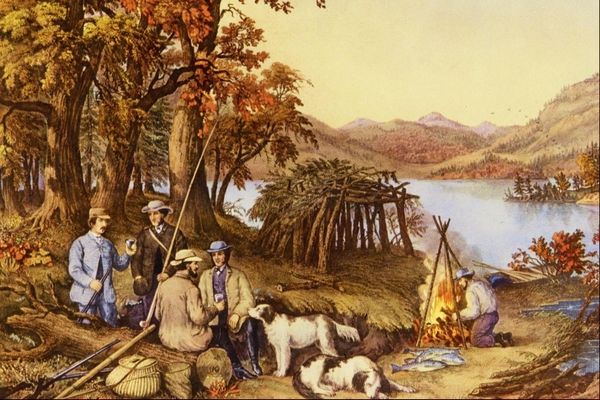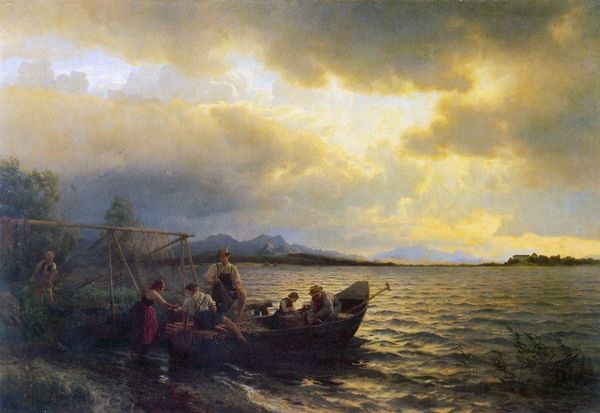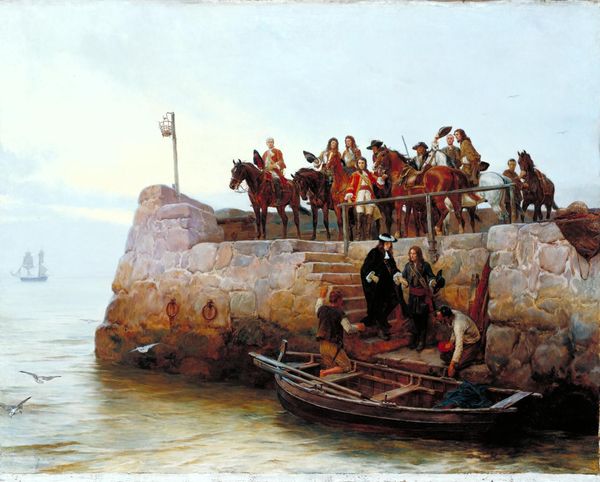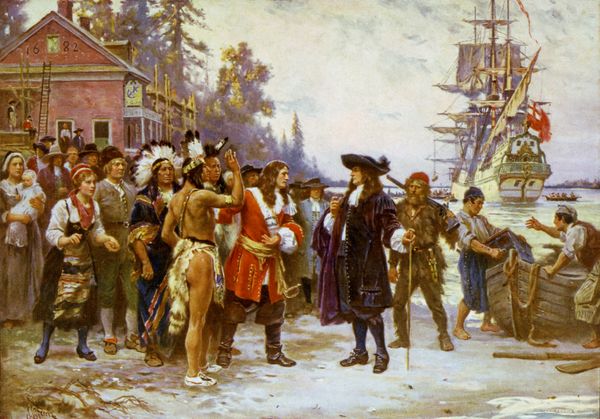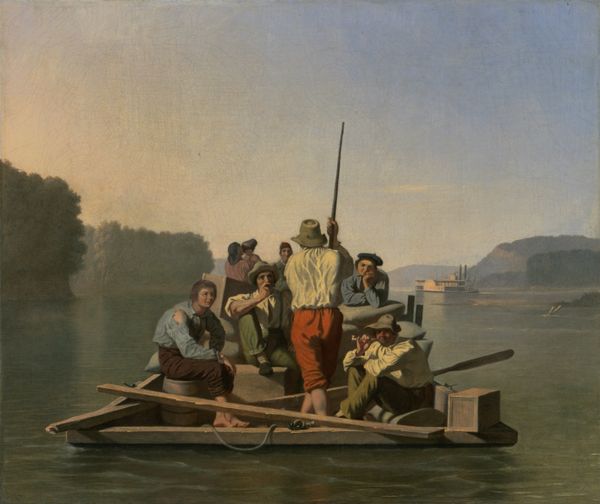
painting, oil-paint
#
boat
#
narrative-art
#
painting
#
oil-paint
#
vehicle
#
landscape
#
impressionist landscape
#
possibly oil pastel
#
oil painting
#
genre-painting
#
history-painting
#
realism
Copyright: Public domain
Editor: So, this is Charles M. Russell's "Lewis and Clark on the Lower Columbia," painted in 1905 using oil on canvas. The waterway dominates the image. It’s interesting how the native canoes in the front are filled to the brim with people, and the boat material almost disappears in the composition. What's your take on this painting? Curator: Considering its depiction of the Lewis and Clark expedition, the painting serves as a historical artifact itself. Russell's use of oil paint is crucial. Oil allowed for blending and layering, achieving a detailed realism that was popular and also allowed for efficient mass production. Think about the accessibility this afforded. Editor: So, are you saying the material dictated the message? Curator: Partially, yes. But also consider the social context. This piece idealizes a frontier narrative during a period of immense industrial growth. The smooth brushstrokes almost sanitize the rugged realities of that period, selling a particular version of westward expansion to a consuming public. The *application* of those paints onto that canvas reinforces that too. Editor: It sounds like you are hinting at some sort of mass appeal. I see it... Were paintings like these a sort of advertisement? Curator: Perhaps not advertisement in a direct sense. But definitely a reflection of, and a contributor to, the prevailing social and economic order. Russell was producing a commodity, made for consumption. The medium, the technique, and the subject all contributed to its marketability. It also speaks to labor; both Russell's artistic labor and the depicted labor of the expedition members. What does it say to you? Editor: It makes me realize how the act of painting itself, from the preparation of materials to its distribution, can influence our understanding of history. So it's not just about WHAT it shows, but HOW it shows it. Curator: Exactly. Looking at the means of production provides insight into cultural values of the period and invites examination beyond just the artwork itself.
Comments
No comments
Be the first to comment and join the conversation on the ultimate creative platform.
